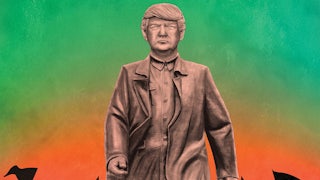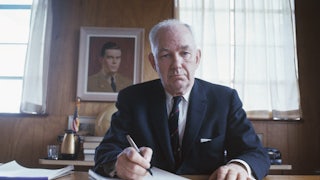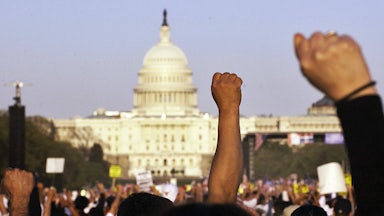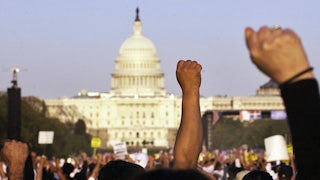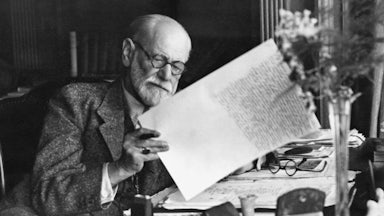It’s debatable whether the twentieth century was in fact the century of the self, as an influential documentary had it, but there’s little question that the Covid-19 pandemic triggered a bout of acute self-isolation—which, at least in the consumer cultures of the West, opened on to a predictable turn toward self-involvement. Even amid the overlapping derangements of Trumpism, vaccine denialism, and racialized political impunity, a pronounced, if in large part involuntary, strain of domestic inwardness held fast. Sourdough bread-making was revived, and lovingly documented on social media, in a weird simulacrum of a frontier-style can-do spirit. The already robust market for TV-streamed entertainment—reliably steeped in glibly nihilistic comedy stylings and casual true-crime mayhem—took a surprising detour into feel-good uplift and self-help bromides, with award-winning fare like Ted Lasso and the last season of Schitt’s Creek. It made a certain intuitive sense that, well into the pandemic’s second year, Time magazine designated Elon Musk—an individualist of the first rank who wove together many of the most toxic brands of libertarian self-help into a cosmos-conquering grift—its 2021 person of the year.
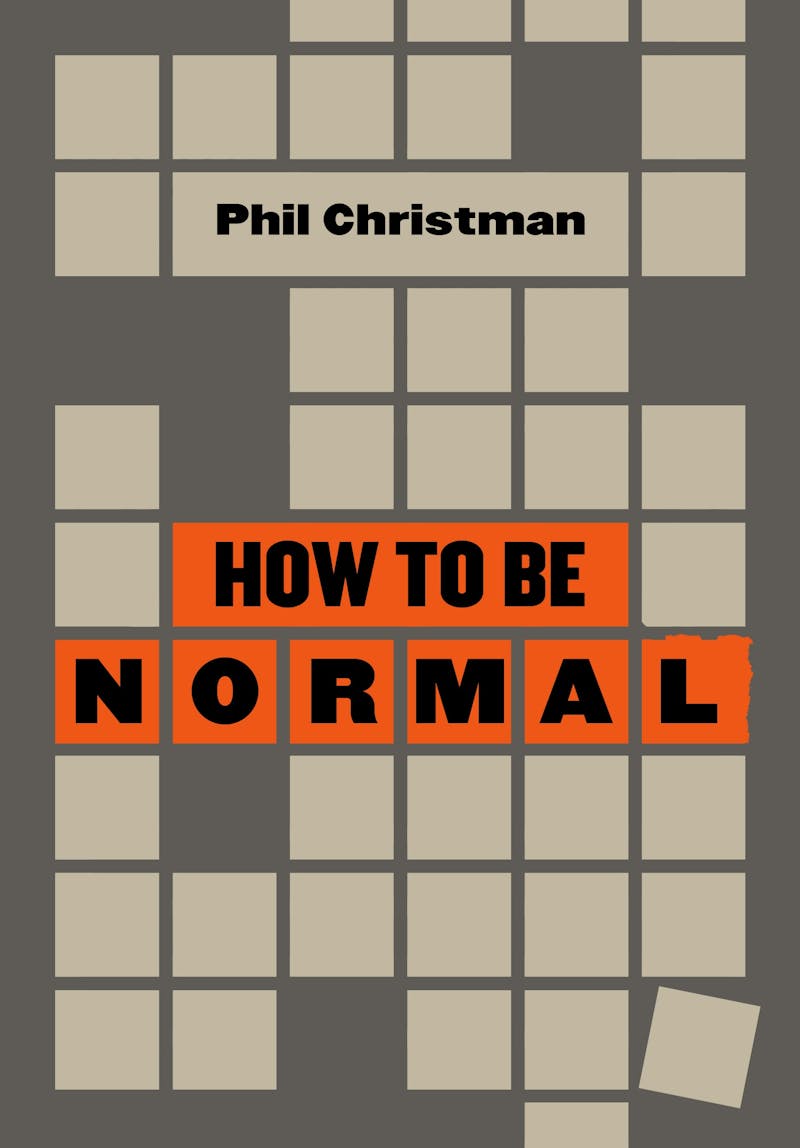
Essayist Phil Christman introduces his new collection of essays, How to Be Normal, with an evocation of the malaise-ridden DIY mood. “There was such a default of reliable information during the pandemic that even highly conscientious and informed people had to string together a Personal Safety Regime as eccentric and individualized as a late Godard film,” he writes, in both a fitting summation of his plainspoken-yet-urbane sensibility and an early indication that this anthology is anything but an earnest life-improving self-help manual. Indeed, he observes, the chief lesson of the pandemic’s many trials is that “there is no normal to get back to anymore.… We are ruled, locally, nationally and internationally, by greedy and silly people, to such an extent that the planet itself is altered, on a massive scale, from year to year, in accordance with their whims.”
So in lieu of offering a user-friendly roster of readily digestible advice on how to get by, How to Be Normal focuses instead on the trials of maintaining a sense of coherent experience, historical continuity, and the like amid conditions of randomized oblivion, wherein “statistical probability reaches down like a giant and swats us and our loved ones away.” Throughout this collection, Christman deftly breaks down the real-world stakes of survival amid chronic conditions of rampaging greed and silliness—and in so doing, makes it clear that, even if the vanished shade of normalcy will never return for us, we are still charged with waging daily battles against the random cruelty of American life as we’ve come to know it. In a host of grimly besieged arenas of public life, from religion and race to mass culture and masculinity, Christman charts a frank and fearless guide for the perplexed, the battered, the exhausted, and the outraged.
In the book’s first outing, “How to Be a Man,” Christman defines masculinity as “an abstract rage to protect” (emphasis in original)—in the face of the all too manifest futility of achieving any lasting state of protector. “Despite what’s been communicated in every action movie ever made,” he writes, “nobody is wily enough to stave off mortality in every instance.” This blank futility is ultimately a comic one, which is why, Christman notes, men wrestling with the cultural legacies of masculinity—chivalry, omnicompetence, and allied social myths—mostly “feel like a bad joke,” something that our mass culture has duly glommed onto. “One is never at a loss for depictions of men qua human beings, but when it comes to men qua men, your choices are between stick figures, between Death Wish and Animal House, between the Batman of Christian Bale and the Batman of Adam West.”
In “How to Be White,” Christman casts a welcome, mordant eye on compulsively confessional accounts of white privilege, largely performed by and about white interlocutors. He characterizes this school of ritualized monologuing “shit-eating allyism,” as popularized by the work of corporate diversity impresario Robin DiAngelo. Christman anatomizes the emotional-cum-spiritual appeal of this practice in a way that’s astute and gratifyingly gender- and class-conscious—in pointed contrast to the legions of bad-faith critics poised to dismiss it as but the latest instance of wokeness run amok:
On the one hand, there are kindhearted people with pathologically low self-esteem, often and not accidentally, women. They are used to taking the blame; DiAngelo’s voice imitates the voice in their own heads. On the other hand, there are people so prosperous that they can afford, in effect, a daily three-minute self-hate.
But, Christman writes, the “great mass of white people, whose ‘wages of whiteness’ still leave them unable to afford their rent, will look at these exemplary flagellants” and wonder what they have in common with them. “It is the kind of task that people who can afford to do it are far too prone to accepting on behalf of others who cannot.”
Readers might expect that Christman is winding up to the well-worn counsel to simply set aside a race-conscious politics in favor of a class-bound (or “universalist”) one. Instead, he’s seeking to dismantle presumptions of a univocal “whiteness”—an increasingly nonsignifying category of debate, Christman suggests. “‘Whiteness’ is something you call people, but you don’t use it to call them together, except to do crimes and bury the evidence.… ‘Whiteness’ only designates a common absence of oppression. Into that absence, every human thing, everything that makes me both a member of a species and a particular being, falls. It’s too much to make a people.”
The upshot here is not somehow to forget about race, as though such a thing were possible, or to shore up right-wing reveries of a wholly mythologized “color-blindness”; it is, rather, to affirm the complicated nature of race as it continues to be imbued with other social forces—and that, like them, it has altered significantly over time.
Since normalcy is by definition mundane, Christman is not by any means only detained by pressing questions of political, racial, or class-bound self-definition. In the first of two essays professing to advise us on “how to be cultured,” he showcases a richly researched bad-movie aesthetic, particularly when such cinematic misfires lay bare the guiding myths of a bankrupt culture. (“These sorts of movies fascinate me in the way a too-honest idiot does after he’s had three or four drinks,” he confesses.) In the ensuing exploration of middlebrow culture and its discontents, Christman hits upon the key social contract that underwrites our overeager celebration of a “mass culture [that] blends many of the elements of the lowbrow with the dutiful, striving, effortful qualities of middlebrow”—and again insists that the surface appearance of placid consensus about the upending of old aesthetic categories conceals a far deeper distemper in our public life. “We are not all equally in control of our lives, and we are afraid of what becoming so would entail, of the costs of democracy, of the mess of it.” So by a sort of cultural accounting trick, we carry that cost and mess forward, onto to the ledger of symbolic cultural accord:
We are divided by class, race, and gender and united only in being the objects of a ceaseless corporate effort to accomplish our commodification. Having lost the economic battle to economic and political elites, we celebrate, again and again, our victory over the mostly imaginary cultural elite that would scorn us for watching 90-Day Fiancé. What you can’t do practically, you do symbolically, until it becomes a neurosis.
The same deft attendance to the deep tensions and unresolved conflicts that infuse our cultural preferences serves Christman well in his two-part exploration of faith; his close reading of contemporary fundamentalist thought is itself worth the price of admission. From the foundational body of cultural grievances that make up the fundamentalist social agenda (“Fundamentalists are lonely in a crowd that consists largely of themselves”) to the scarcely concealed racial animus in the movement’s militant breed of Kulturkampf (“they have inherited the southern, post-Civil War resentment, the terror that one is about to be reconstructed out of existence”), Christman’s analysis bristles with incisive and well-earned insight. (It helps in no small part, I think, that Christman is himself a believer, and so is exceptionally attuned to the willful derogation and perversion of his own lived faith.)
In discussing the movement’s unhinged brand of nominalism—the fetishized attention to hidden significations of commonplace utterances and profane forms of artistic expression—Christman brings the skill furnished by his day job as a writing professor at the University of Michigan to the unspooling fundamentalist assault on commonsense linguistic meaning. This deep hermeneutics of cultural suspicion has converged with the contemporary fundamentalist movement’s obsessive quest to identify and damn a shifting cast of die-hard cultural enemies to “take on baroque proportions,” Christman writes:
Perhaps the best explanation for fundamentalism’s moral decline, when measured against its grandparents, is that it didn’t start often enough from the premise that the contagion was already within. And like many exaggerated fears, this one has a tendency to turn inside out. On the theory that you are merely defending yourself, you revel in the thing you claim to oppose. Pizzagate, and more recently QAnon, clearly grow from fundamentalist Christianity, but the willfulness with which they practice mystical eisegesis [i.e., interpreting a text through the lens of one’s preexisting ideas] seems new to me. QAnon, in particular, is distinct from all these earlier phenomena, even Pizzagate, in that it produces the texts that it then proceeds to find arcane meanings in.... (Pizzagate has at least this much dignity: you can read it as a warped way of interpreting the unspeakable horror of Jeffrey Epstein’s existence and his clear place at or near the center of power.)
In this respect and scores of others, How to Be Normal eclipses the intended ironies of its title—for the unfortunate truth is that part of being passably normal in today’s America involves making sense of things like QAnon, to say nothing of the routinized cruelties of race, class, and protectionist patriarchy, together with all manner of mass-cult evasions that have sprouted up around them. As a guide for modern living, you can certainly do a lot worse than the advice on offer in How to Be Normal—a body of real-world counsel that’s perhaps best accompanied by a book of common prayer.

